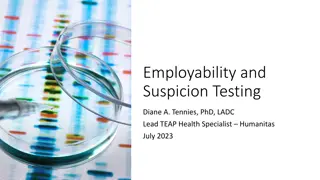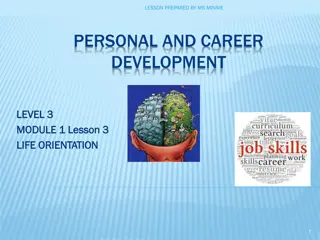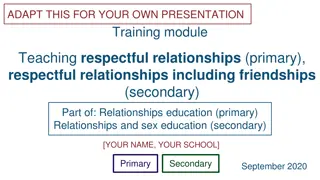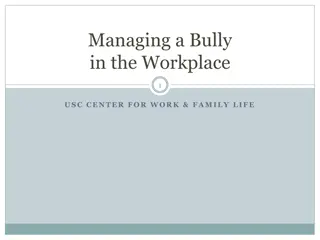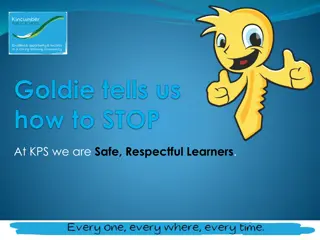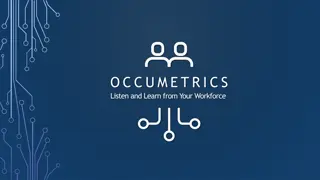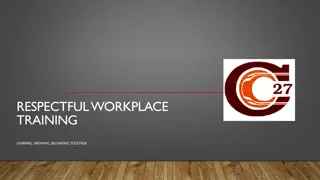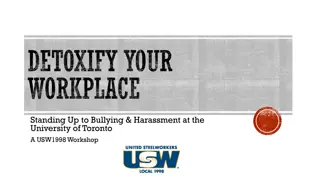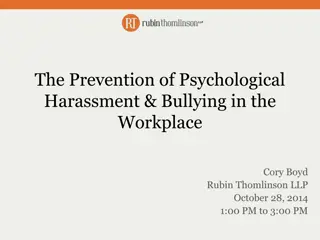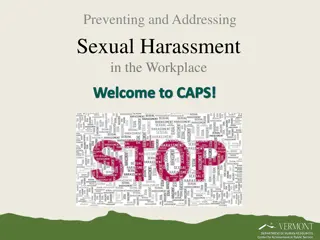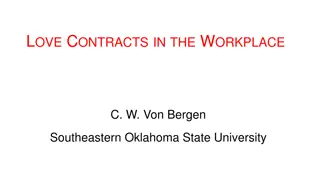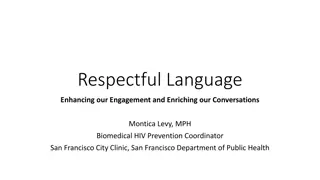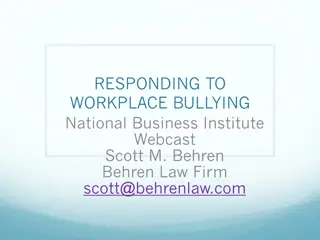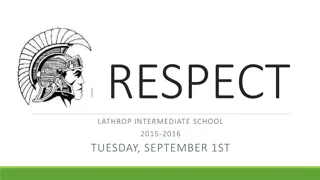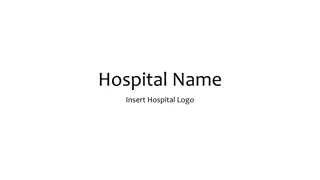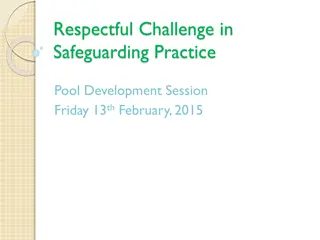Challenges and Trends in Respectful Workplace Practices
Explore the dynamics of creating a respectful workplace, including defining characteristics, recognizing disrespectful behaviors, and promoting a culture of fairness, communication, and empowerment. Discover the importance of addressing biases, making sound judgments, and staying away from hostile environments to lead positive change in work environments.
Download Presentation

Please find below an Image/Link to download the presentation.
The content on the website is provided AS IS for your information and personal use only. It may not be sold, licensed, or shared on other websites without obtaining consent from the author.If you encounter any issues during the download, it is possible that the publisher has removed the file from their server.
You are allowed to download the files provided on this website for personal or commercial use, subject to the condition that they are used lawfully. All files are the property of their respective owners.
The content on the website is provided AS IS for your information and personal use only. It may not be sold, licensed, or shared on other websites without obtaining consent from the author.
E N D
Presentation Transcript
Respectful Workplace Challenges & Current Trends Defining Respectful Workplaces Making Snap Judgements/Staying Away from Biases
Changes & Emphasis of WIOA and EO Processes & Procedures of Complaints Partnering Together Leading Change (Can t Take the Same Approach to Achieve Different Results
Ways to Participate PRISONER: Another meeting from which there is no escape! TOURIST: What can these people do for me? PARTNER: How can I help make this successful?
Challenges & Current Trends Hostile Environments including Work
NOT VALUING PEOPLE Yelling, shouting and or using profanity Spreading malicious rumors or gossip Demeaning, belittling or humiliating someone Abuse of authority, undermining another s career Examples of Disrespectful behavior & Harassment
Unwelcome remarks, innuendoes or taunting Racial or ethnic slurs, including derogatory nicknames Humiliation of staff in front of co-workers Actual or threatened physical assault Threatening or bullying Examples of Disrespectful behavior & Harassment
Respectful workplace defined: A respectful workplace is one where all employees are treated fairly, difference is acknowledged and valued, communication is open and civil, conflict is addressed early and there is a culture of empowerment and cooperation.
Under the WIOA nondiscrimination regulations, it s: Governors, and/or . . . LWDA grant recipients . . . and EO Officers!
Two options -- complainant gets to decide where to file Recipient level Civil Rights Commission (CRC)
Recipient Level WIOA s decentralized structure = individual recipients, states and/or local areas decide who processes complaints Service providers = Governor or LWDA grant recipient publishes complaint processing procedures
Recipient Level (continued) If a complainant files a complaint at the recipient level The recipient must process it can t just refer it to CRC! If a complainant files both at the recipient level and with CRC, CRC will defer processing until the recipient process is completed (or until 90 days have passed)
Recipient Level (continued) If a complainant files both at the recipient level and with CRC The CRC will defer processing until the recipient process is completed (or until 90 days have passed)
Complaints must be filed in writing Required Elements of Procedures
Initial written notice that complaint has been received Written statement of the issues or Lack of notice of Jurisdictions (5 days) Period for fact finding Period for attempted resolution Written notice of Final Action
Acknowledgement of Complaint Notice of right of representation Notice of rights (EO Notice 29 CFR) Notice that complainant has the right to receive at no costs such auxiliary aids and services, language assistance services and translation services
It is not administrative procedures, procedures for processing complaints, but about the state and the partners creating a proactive environment that values and receives all without judgement or bias. Understand the recipient s obligation to prevent harassment.
It is about Responsibility of the Recipient Living by the EEOC identified Core Principles including committed and engaged leadership Strong and comprehensive complaint procedures Trusted complaint procedures
Financial, Funding Accountability Increases Productivity and Engagement Fosters and embraces diversity Strengthens Relationships (Issues versus Personal) A culture of fairness and equity
Discrimination & Harassment can be Employer to Employee (or potential employee) Co-worker to co-worker From a supervisor or from a subordinate Man to Woman or Woman to Man Man to Man or Woman to Woman Comments about a persons friends or family or relationships (ex: wife, girlfriend or child)
Labor & Workforce will partner with LWDA to train all staff on WIOA/Nondiscrimination regulations, civil rights laws, protected classes, procedures, diversity initiatives, etc. during the first half of 2018 We will partner together to ensure
No individual shall be excluded from participation in, denied the benefits of, subjected to discrimination under, or denied employment in the administration of or in connection with, any such program or activity because of
Race Color Religion Sex National Origin Age
Disability Political Affiliation or belief Citizenship status (for beneficiaries, applicants, & participants only) Participation in a WIOA Title I Program (for beneficiaries, applicants, & participants only)

 undefined
undefined











